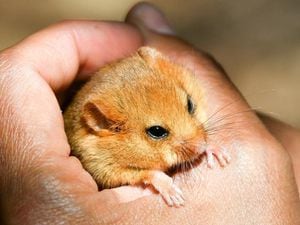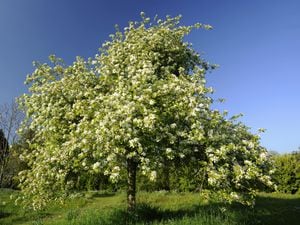Hazel dormouse numbers down by half since 2000, report warns
A People’s Trust for Endangered Species study highlights the need for good quality habitat for the rare mammals.

Britain’s population of hazel dormice has halved since 2000, a report by the People’s Trust for Endangered Species warns.
The tiny but endearing mammals have seen numbers fall by 51% since the new millennium, according to data gathered by volunteers for the National Dormouse Monitoring Programme.
The species, immortalised as a sleepy guest at the Mad Hatter’s Tea Party in Alice In Wonderland, has been hit by changes to the way woodlands are managed, as well as climate change, the PTES said.
Its State Of Britain’s Dormice 2019 report highlights the importance of providing the right habitat through the way woodlands are managed to bring the species back from the brink.
Hazel dormice have already vanished from 17 counties in England, and the areas where they are still known to be found are almost all entirely south of a line between Shropshire and Suffolk.
But there are some areas where their numbers are on the increase, the report found, with populations stable or increasing at 96 of the 336 sites analysed as part of the study.
At 28 sites, the average annual increase was 5% or more, the data reveals.
Dormice like mixed woodland with tree holes to nest in, dense shrubby areas growing under the trees in woods, and hedgerows by which to move around the countryside.
A move away from traditional woodland management such as coppicing and small-scale tree-felling has helped lead to the loss and break-up of good-quality habitat.
They are also at risk from unseasonal or extreme weather – on the increase with climate change – that can affect their winter survival and ability to breed.
Ian White, dormouse and training officer at PTES, said: “The decline in dormouse numbers is due to the loss and fragmentation of their natural woodland and hedgerow habitats, as well as climate change.
“In particular, it’s the loss of habitat quality that’s of real concern.”
He added: “Although the State Of Britain’s Dormice 2019 report shows a severe decline has taken place over the last 18 years, the good news is that in some areas dormice are doing well.
“We can help bring this species back if we alter the way we manage our landscape.
“By providing enough of the right habitat, which is well-connected and managed correctly, dormice, as well as a huge amount of other wildlife, can thrive once again across the country.”

He said woodland areas need to provide a shrubby layer under the tree canopy so dormice and other wildlife can nest and feed and have access to the mature trees.
PTES provides training and guidance for woodland managers to help them manage their woods for hazel dormice.
The charity has recently launched the Great British Hedgerow Survey, asking farmers assess the condition of their hedgerows, which help link up areas of habitat for dormice.
And experts at PTES have also managed 30 reintroductions at 24 sites over the past 26 years, releasing almost 1,000 captive-bred dormice to create new populations or boost existing ones.




